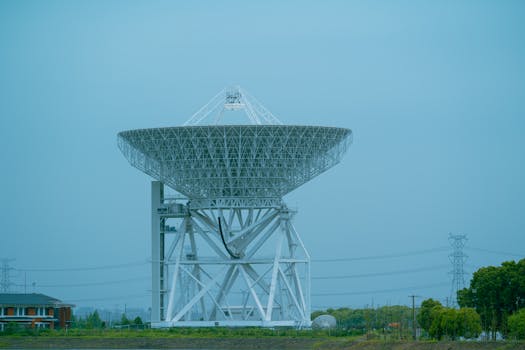Harnessing the Skies: New Technologies Transforming Satellite Communications
The satellite communications industry is undergoing a significant transformation, driven by new technologies that are enabling faster, more reliable, and more affordable connectivity. In this article, we will explore the latest advancements in satellite communications and their potential impact on various industries.

Harnessing the Skies: New Technologies Transforming Satellite Communications
Harnessing the Skies: New Technologies Transforming Satellite Communications is revolutionizing the way we communicate. The satellite communications industry is undergoing a significant transformation, driven by new technologies that are enabling faster, more reliable, and more affordable connectivity. In this article, we will explore the latest advancements in satellite communications and their potential impact on various industries.
The use of satellite communications has been around for decades, but recent advancements in technology have made it possible to provide high-speed internet connectivity to remote and underserved areas. One of the key drivers of this transformation is the development of new satellite constellations, such as OneWeb and Starlink, which are designed to provide global coverage and high-speed connectivity. These constellations are made up of hundreds of small satellites that are launched into low Earth orbit, providing a network of interconnected satellites that can offer reliable and fast connectivity.
New Technologies and Innovations
Several new technologies and innovations are driving the transformation of the satellite communications industry. One of the key technologies is the development of phased array antennas, which allow for the simultaneous transmission and reception of multiple signals. This technology enables the creation of high-throughput satellites that can provide fast and reliable connectivity. Another key technology is the use of advanced propulsion systems, such as electric propulsion, which allows satellites to maintain their position and altitude for longer periods of time.
In addition to these technologies, there are also several innovations that are being developed to improve the efficiency and effectiveness of satellite communications. For example, the use of artificial intelligence and machine learning is being explored to optimize satellite constellation operations and improve the quality of service. Additionally, the development of new materials and manufacturing techniques is enabling the creation of smaller, lighter, and more efficient satellites.
Impact on Various Industries
The transformation of the satellite communications industry is having a significant impact on various industries, including telecommunications, aviation, maritime, and emergency response. For example, the use of satellite communications is enabling the provision of high-speed internet connectivity to remote and underserved areas, which is having a major impact on the telecommunications industry. Additionally, the use of satellite communications is being used in the aviation and maritime industries to provide critical communication services, such as air traffic control and navigation.
The use of satellite communications is also having a major impact on the emergency response industry, where it is being used to provide critical communication services during natural disasters and other emergencies. For example, during Hurricane Maria in 2017, satellite communications played a critical role in providing emergency response services, including search and rescue operations and medical evacuation.
Conclusion
In conclusion, the satellite communications industry is undergoing a significant transformation, driven by new technologies and innovations. The development of new satellite constellations, phased array antennas, and advanced propulsion systems is enabling the provision of fast, reliable, and affordable connectivity. The impact of this transformation is being felt across various industries, including telecommunications, aviation, maritime, and emergency response. As the industry continues to evolve, we can expect to see even more innovative solutions and applications of satellite communications.



